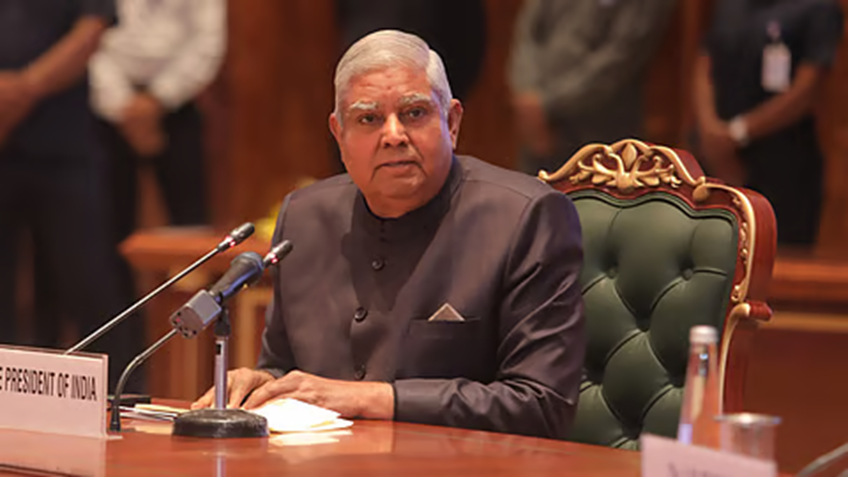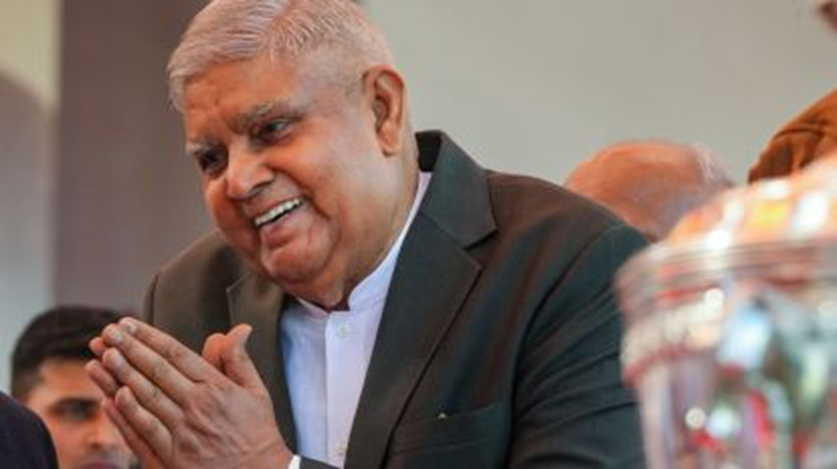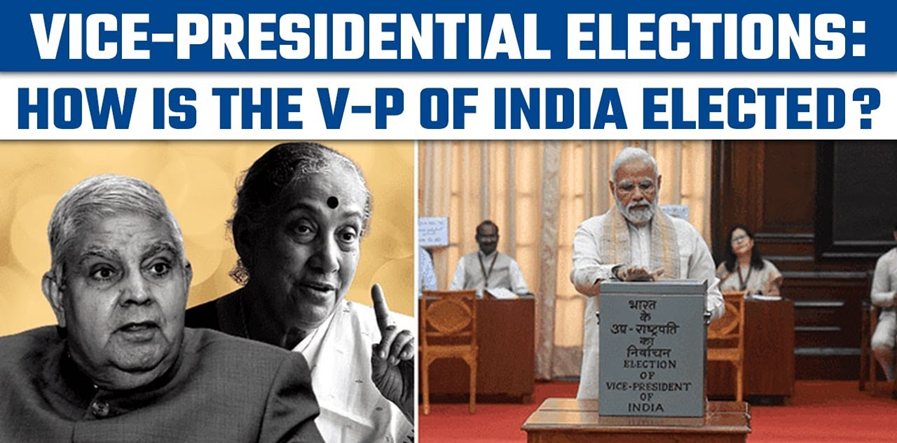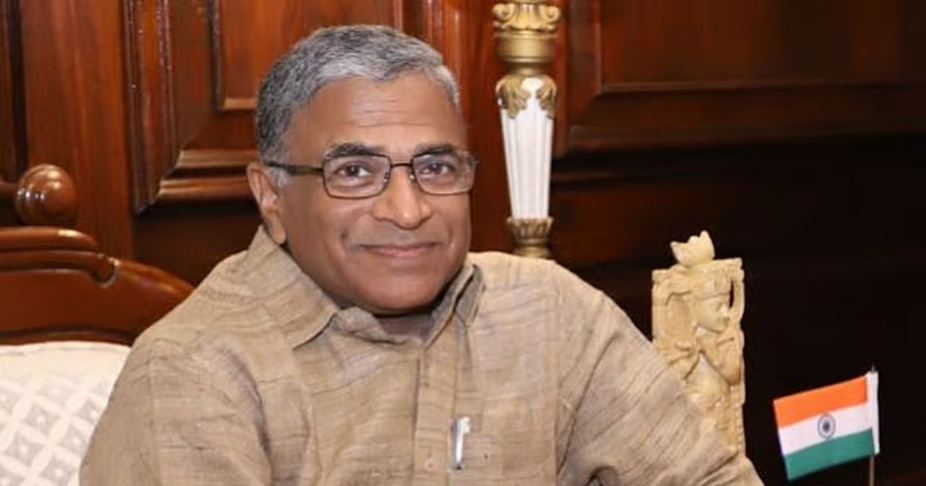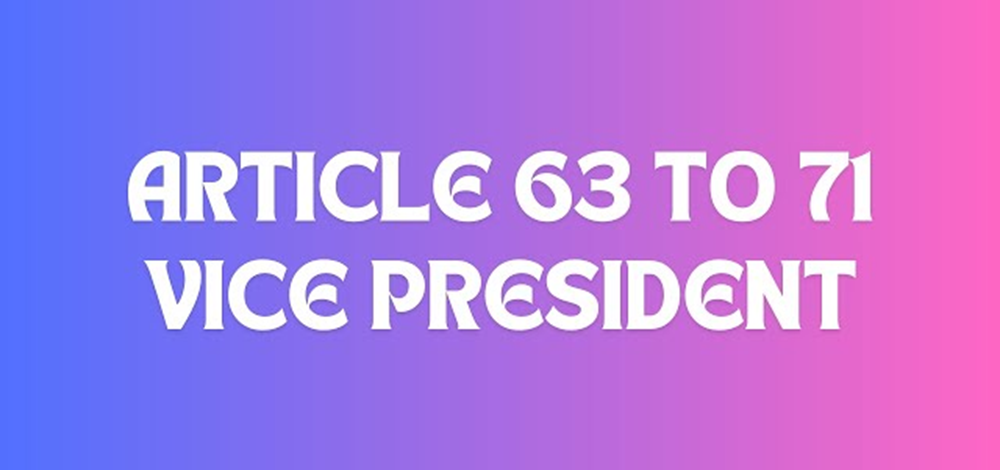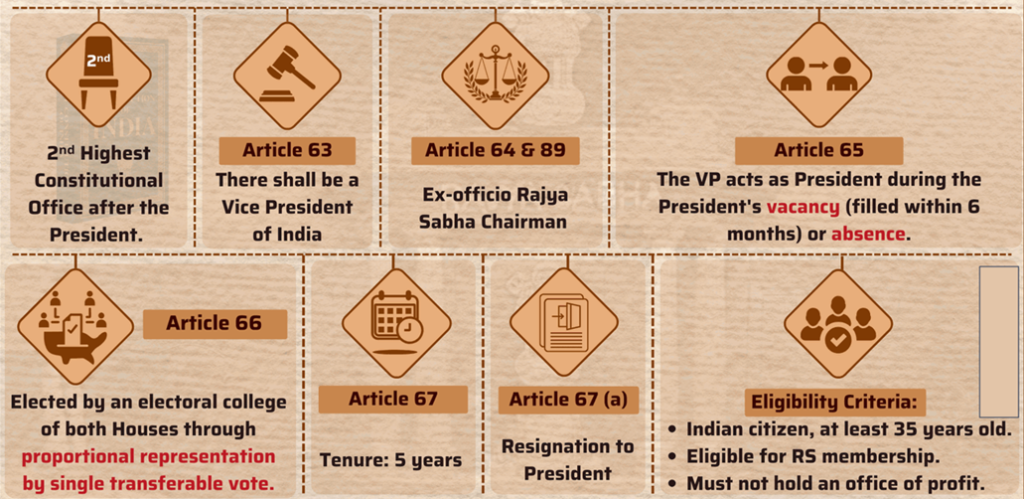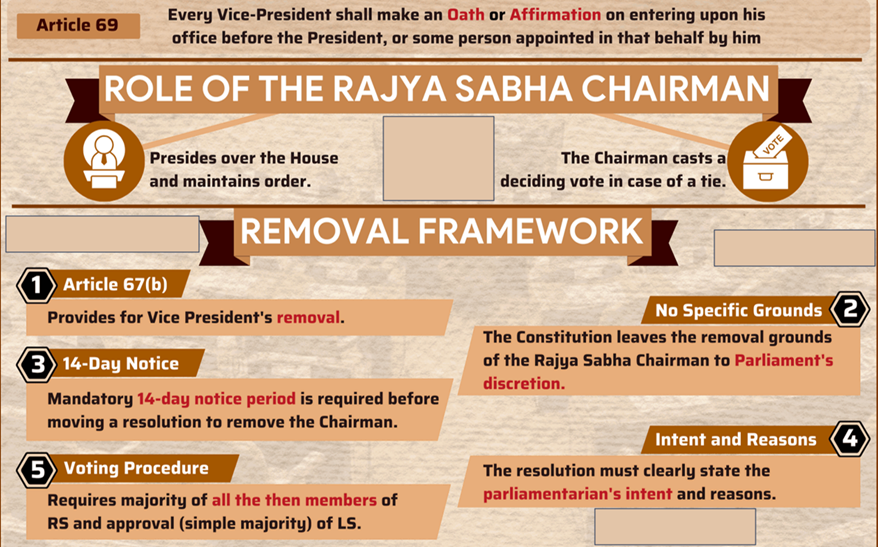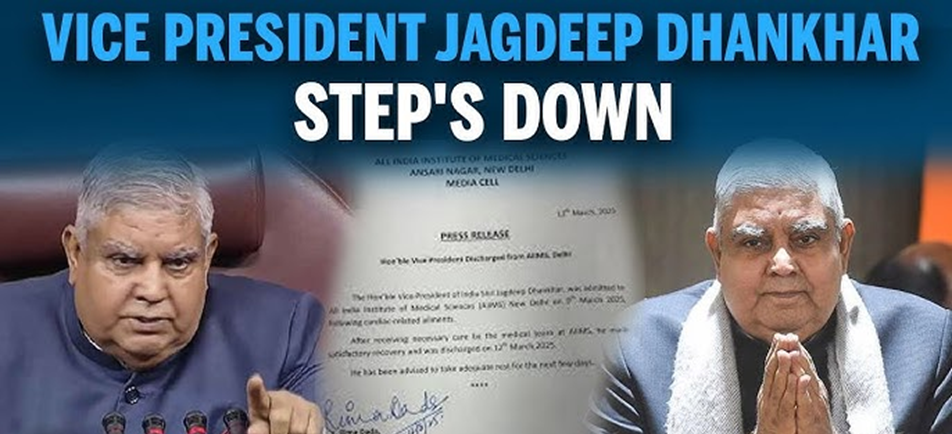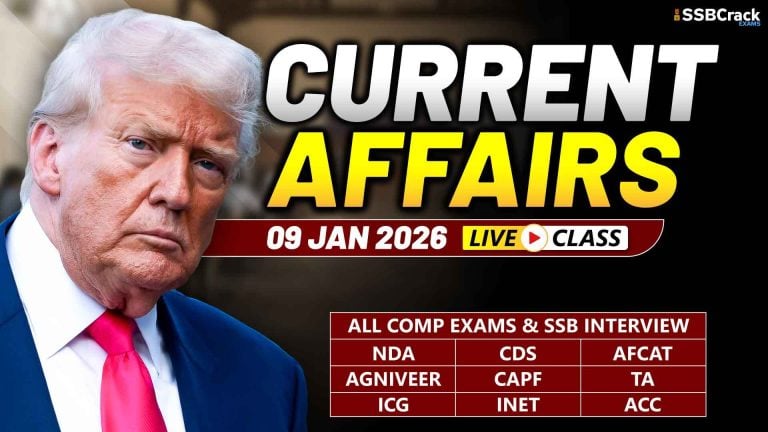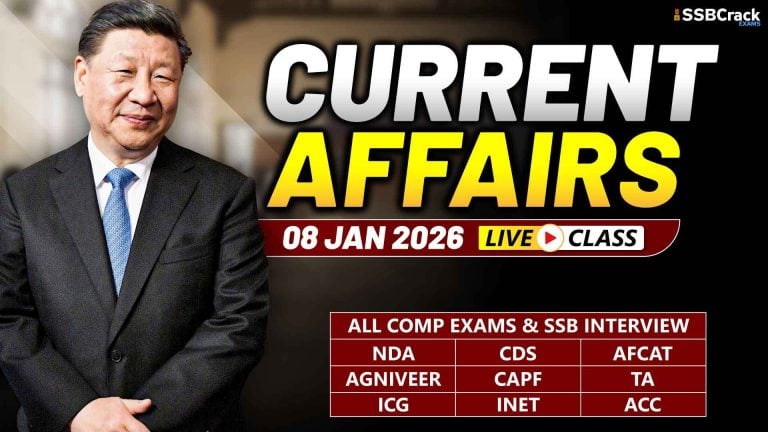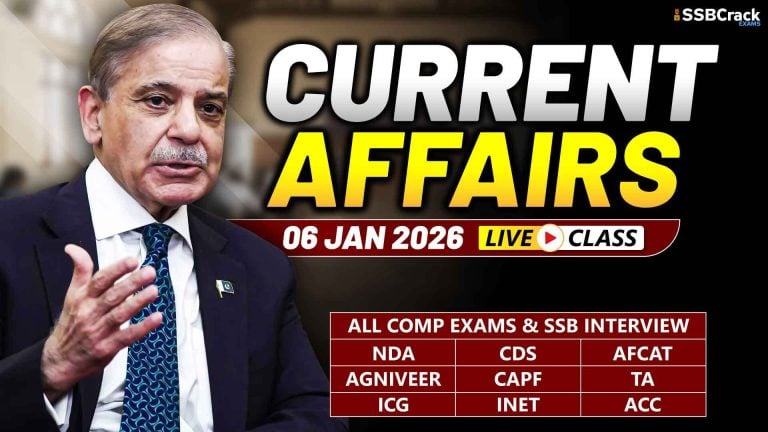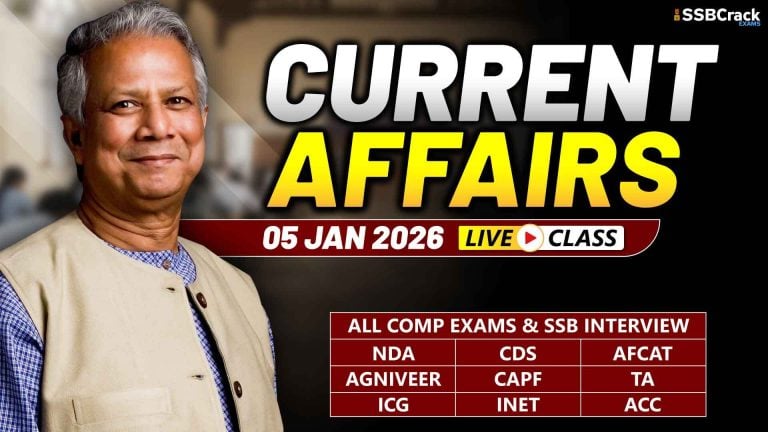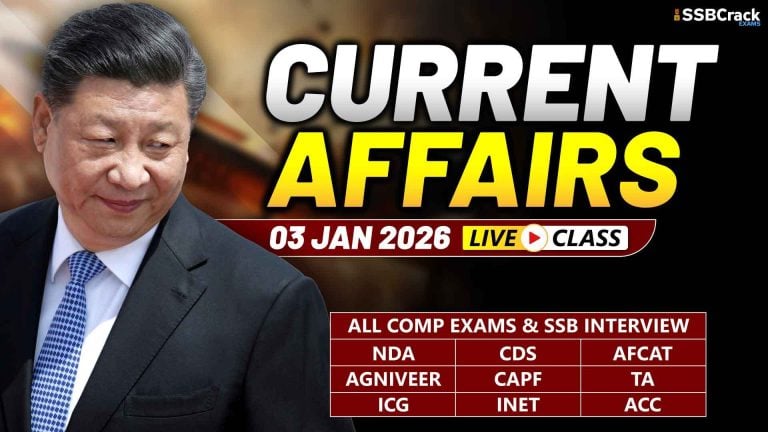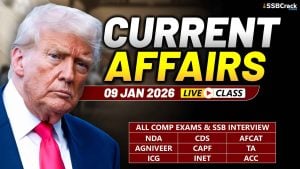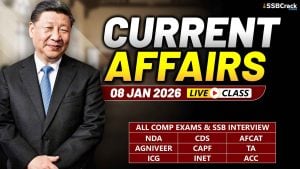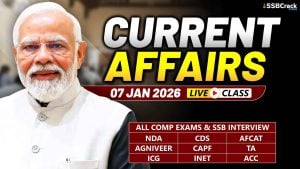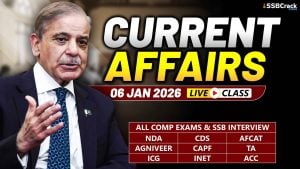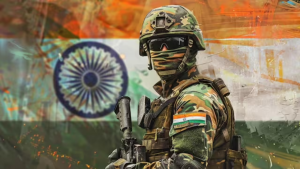Vice-President Jagdeep Dhankhar’s resignation has created a rare mid-term vacancy in the country’s second-highest constitutional office. He is only the third Vice-President in India’s history to resign before completing his term, after V.V. Giri and R. Venkataraman—both of whom stepped down to contest presidential elections and were succeeded by Gopal Swarup Pathak and Shankar Dayal Sharma, respectively. Dhankhar, 74, assumed office in August 2022, and his tenure was till 2027.
Jagdeep Dhankhar Resigns As VP | Who Will Be Next Vice President?
Why InNews
- Vice-President Jagdeep Dhankhar’s resignation has created a rare mid-term vacancy in the country’s second-highest constitutional office. He is only the third Vice-President in India’s history to resign before completing his term, after V.V. Giri and R. Venkataraman—both of whom stepped down to contest presidential elections and were succeeded by Gopal Swarup Pathak and Shankar Dayal Sharma, respectively. Dhankhar, 74, assumed office in August 2022, and his tenure was till 2027.
Who Performs Vice-President’s Duties Now
- Constitution does not provide for an acting Vice-President. However, since the Vice-President is also the ex-officio Chairman of the Rajya Sabha, the Deputy Chairman — currently Harivansh Narayan Singh — will preside over the House in his absence.
When Will The Election Be Held
- In the case of the President, the Constitution requires that a vacancy be filled within six months. But for a Vice-Presidential vacancy, there is no such fixed deadline. The only requirement is that the election be held “as soon as possible” after the post falls vacant. The Election Commission will announce the schedule. The poll is conducted under the Presidential and Vice-Presidential Elections Act, 1952. As per convention, the Secretary General of either House of Parliament is appointed as the Returning Officer, in rotation.
Top Contenders For Vice President’s Post
- In Harivansh Singh among top contenders for Vice President’s post
- Among the leading names being discussed for the post is Rajya Sabha deputy chairman Harivansh Singh, a Janata Dal (United) MP who has held the role since 2020 and is considered a trusted ally of the government.
- According to a report in the news agency, the BJP may also consider appointing a state governor—on the lines of Dhankhar, who served as West Bengal governor before becoming Vice President—or a senior Union minister with parliamentary experience. A top organisational leader is also not being ruled out.
How Is The Vice – President Elected In India
- Articles 63 to 71 of the Constitution and the Vice-President (Election) Rules, 1974, govern the vice president’s election process. According to the rules, a formal election must be held within 60 days of Dhankhar’s resignation and before September 19, 2025.
- Vice-President is elected by an electoral college made up of members from both Houses of Parliament — Lok Sabha and Rajya Sabha — including nominated members. Unlike in a presidential election, state legislatures do not participate.
- Voting is held in Parliament House in New Delhi, by secret ballot, using the system of proportional representation with a single transferable vote. Each MP casts a vote by ranking candidates in order of preference. All votes carry equal value.
- To be declared elected, a candidate must reach a required minimum number of votes — called the quota. This is calculated by dividing the total number of valid votes by two and adding one (fractions, if any, are ignored). If no candidate crosses the quota in the first round, the one with the fewest first-preference votes is eliminated, and their votes are transferred to the remaining candidates based on second preferences. The process continues until one candidate crosses the quota.
What Are The Eligibility Criteria
- A person contesting for the post of Vice-President must be a citizen of India, at least 35 years old, qualified to be elected to the Rajya Sabha, and registered as an elector in any parliamentary constituency. They must not hold any office of profit under the central or state governments, except positions like President, Governor, or Minister.
